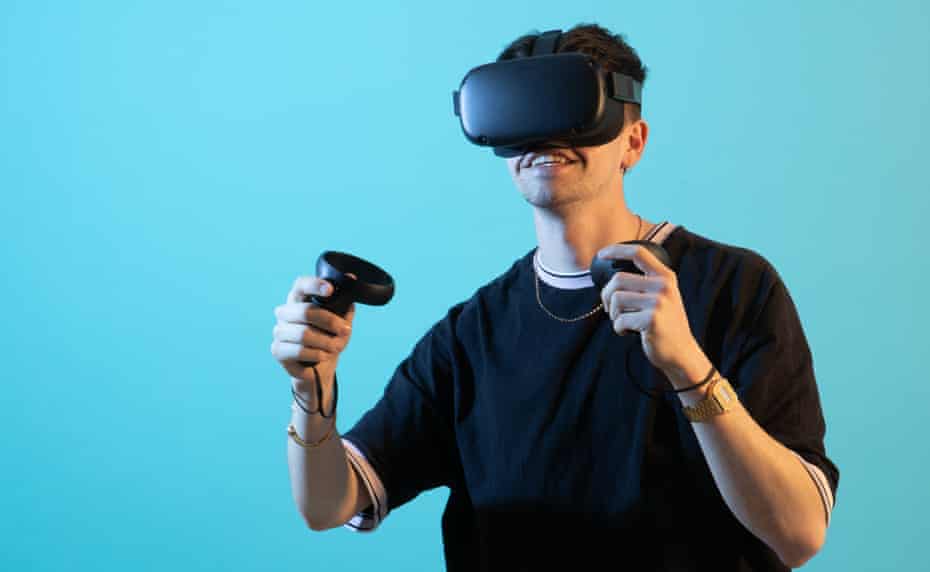What is the Metaverse?
Key takeaways:
- There is no definitive explanation of metaverse. An unprecise definition of metaverse can be a virtual world where people can do things in real life.
- The Metaverse is still at its very early stage. There hasn’t been a real “metaverse” although some building blocks of metaverse are in place and some projects have aspects of a metaverse.
- Cryptocurrencies are an essential part for the formation and growth of metaverse.
Introduction
In October 2021, Facebook changed its name to Meta to “better encompass what it does, as it broadens its reach beyond social media into areas like virtual reality (VR)”. Shortly after, Microsoft unveiled a corporate version of a metaverse based around its Teams meeting software. Even Nike is preparing for the metaverse with its move of acquiring a company that makes virtual sneakers and NFTs for the metaverse. With the big firms staking claims, metaverse suddenly becomes a hot topic for conversations.
According to a recent survey done in the US, over 50% of people have heard of the term “metaverse”. This percentage dwarfs the other hot topics in blockchain such as DeFi, DAOs, GameFi, or Web 3.0. With the marketing hype around the term and more and more renowned companies and individuals entering the space, metaverse is going to attract more attention.
With that said, so…
What is the Metaverse exactly?
In Mark Zuckerburg’s presentation on the metaverse, the company showed a scenario in which a young woman is sitting on her couch scrolling through her phone when she sees a video a friend posted of a concert that's happening halfway across the world. With a simple click, the woman appears in the concert in an Avengers-style hologram. At the concert, she's able to make eye contact with her friend who is physically there, they're both able to hear the concert, and they can see floating text hovering above the stage.
Is that how Metaverse looks like?
Well, yes and no.
Facebook, sorry Meta, did a great job in helping people envision what living in Metaverse could look like. Through Fa…Meta’s introduction, many people vaguely know that metaverse is somewhat related to bringing real life into a virtual world and still having a (near) real-world experience. That vague sensation of metaverse is probably one of the best ways to get a hold of what metaverse is for most people at the moment.
To make it more visualizable, let’s give an unprecise/unofficial definition in this article: metaverse is a virtual world where people can do many things in real life, for example, work, social, go to a concert, go on a vacation, etc. Eighty percent of the time, this definition shouldn’t deviate a lot from what “metaverse” is.

To a certain extent, defining what metaverse means is like discussing what “internet” means in the 1970s. The building blocks of a new form of communication were being built, but no one really knew what the whole picture would look like, and how far it would go. The term “metaverse” is vague and complex, and it doesn't really refer to any one specific type of technology, but rather a broad shift in how humans interact with technology.
The internet initially started with a series of technological innovations, like the ability to let computers talk to each other and the ability to link from one web page to another. These features were the building blocks to make the abstract structures of the internet: websites, apps, social networks, and everything else that relies on those core elements.
With the metaverse, similarly, there are some new building blocks in place and are continuingly being improved, such as the ability to host hundreds (maybe thousands or even millions in the future) of people in a single instance of a server, and the motion-capturing kits that can distinguish people’s gestures and movements. These technologies can be exciting and futuristic.

However, there are limitations that need to be overcome. For example, the technologies that make up the metaverse emphasize virtual reality (VR) – characterized by persistent virtual worlds that continue to exist even when you are not playing- and augmented reality (AR) which combines virtual and physical worlds. With the current technology, VR headsets are still very clunky. Most people can’t wear them for too long, and AR glasses have a similar problem.
With that said, some aspects of metaverse already exist, especially in video games. Games like Roblox and Fortnite bring together multiple elements of real life into the virtual worlds. While these projects are not metaverse, some elements deployed in the projects are the same or similar to those in metaverse. The real “metaverse” does not exist yet.
Crypto in the metaverse, how do they fit?
Imagine in the future when we’ll be able to live in the virtual world – we work, relax, socialize, buy and sell items – we’ll need many things like we currently have in the real world. Money and ownership are among the most important of all those things. We’ll need a secure way to transfer the items and value around, we’ll need to be able to show ownership.

Cryptocurrencies are virtual cash, and transactions are almost instantaneous and the blockchain technology behind them is designed to ensure security and integrity. NFT (Non-Fungible Token), also backed by blockchain, makes ownership proof native with the technology.
Some existing blockchain games which integrate metaverse elements contain crypto and NFTs already. For example, Decentraland uses its token MANA as a way to transfer value. If you want to buy anything in the game, you’ll need this token. The in-game items are represented as NFTs to prove ownership. Other blockchain games like Sandbox and Enjin deploy similar models when it comes to transferring value and proving ownership.
Other than providing “store of value” and “proof of ownership”, cryptocurrencies and NFTs have other aspects that suit the metaverse. For example, crypto tokens can be used as a governance tool in metaverse just as they are being used in the current DeFi projects. NFTs are digital collectibles, which are important for a metaverse looking into incorporating real-life activities because owning something original and unique is a human being’s native esteem need.
The gaming industry (GameFi included) has made it clear that while no one can predict exactly what the metaverse will look like in the future, or when its final form will arrive, the importance of cryptocurrencies for its growth is a certainty.
Closing
Metaverse, a term that originated from a Neal Stephenson’s sci-fi novel, has gone beyond fiction and might become reality in the future. With the current technological limitations, no one knows what metaverse is, not even Meta or Microsoft. While it is tempting to compare the proto-metaverse ideas we have today to the early internet and assume everything will get better and progress in a linear way, that is not given. There is no guarantee that people will want to live in metaverse, or regulations won’t come in cutting everything off, or the technology that is limiting the visioning of metaverse will overcome the impediments.
For investors, there is no need to rush into a decision and FOMO (fear of missing out). Metaverse is still in its very early days, and no one knows how it’ll evolve. It’s important to do your own research and make sure you understand the topic, the projects, and the risks before investing in the metaverse.
Investing in NFTs? Get early access to NFTures, the world’s first derivatives product that enables users to take long or short positions in individual NFTs like CryptoPunks, Art Blocks, and Bored Ape Yacht Club, or a basket of NFTs comprised of multiple assets.
Disclaimer: SynFutures Academy does not guarantee the reliability of the site content and shall not be held liable for any errors, omissions, or inaccuracies. The opinions and views expressed in any SynFutures Academy article are solely those of the author(s) and do not reflect the opinions of SynFutures. The SynFutures Academy articles are for educational purposes or information only. SynFutures Academy has no relationship to the projects mentioned in the articles except for SynFutures, and there is no endorsement for these projects. The information provided on the site does not constitute an endorsement of any of the products and services discussed or investment, financial, or trading advice. A qualified professional should be consulted prior to making financial decisions.




